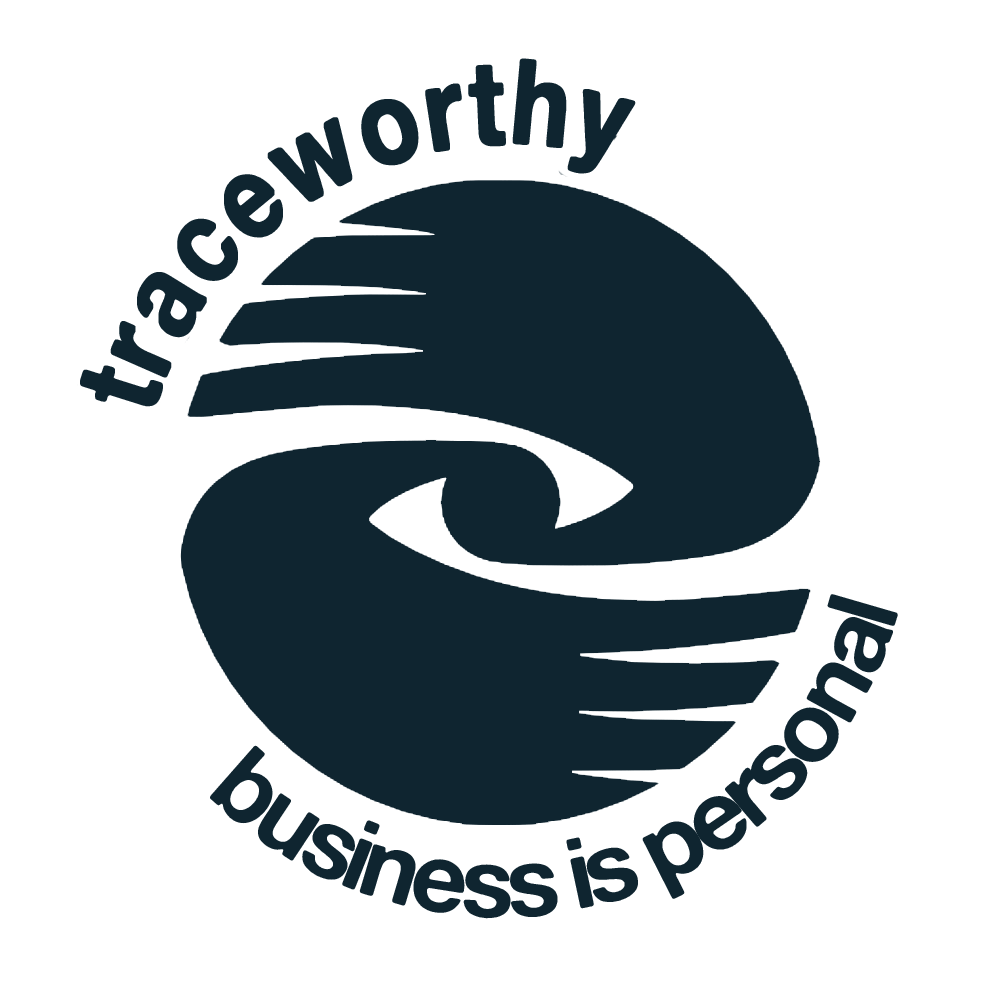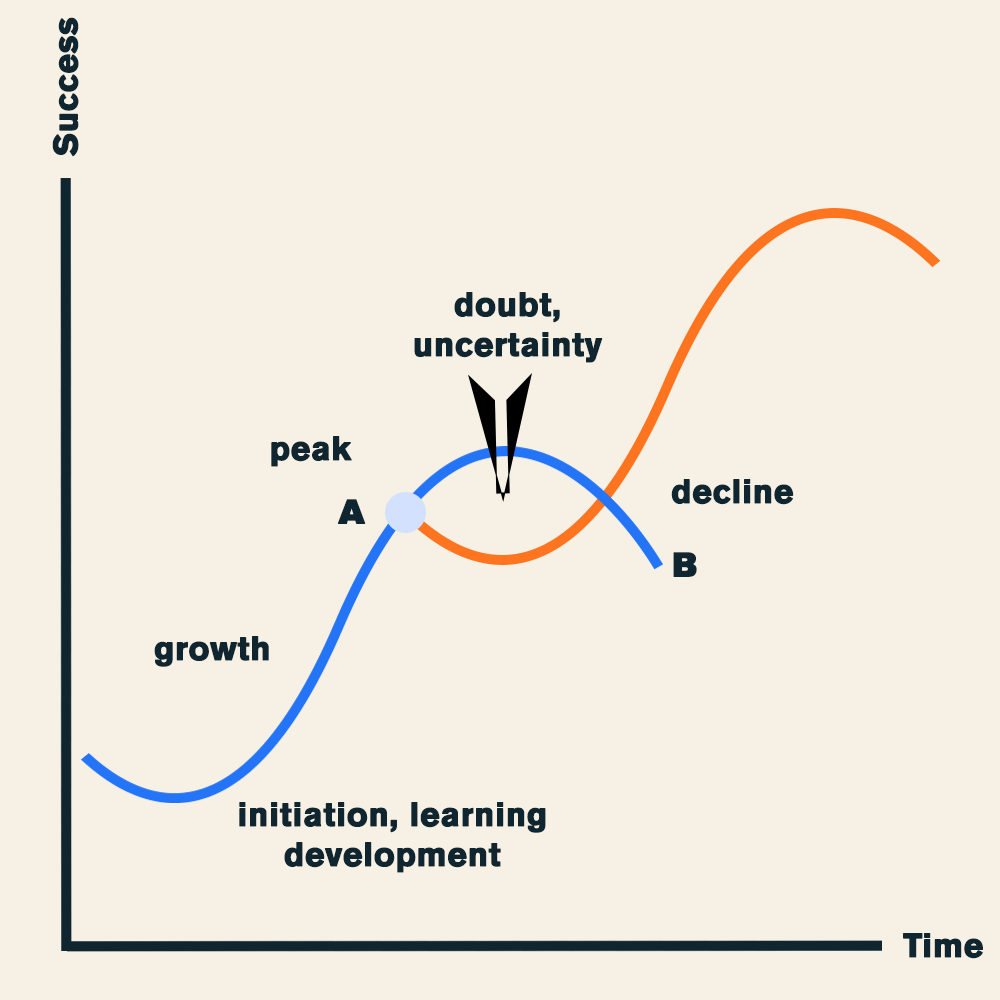Understanding the Founder Identity Shift Through the Sigmoid Curve in Business
Growth reveals things. It reveals what the market values. It reveals how systems hold under weight. And, for many business owners, it reveals whether their own leadership still fits the shape of the organisation they built.
We often meet founders at this precise inflection point—when the structure still holds, but the founder knows something has shifted. The business is stable — even successful. But the founder feels disconnected, reactive, or simply tired of holding things together. This is not failure. It is the beginning of a founder identity shift.
And while the spreadsheets still show growth, something else has already started to turn.
The Sigmoid Curve in Business Is a Pattern You Can Feel Before You See
The Sigmoid curve in business illustrates a lifecycle most founders will recognise—even if they do not know the model by name. There is an initial period of investment and experimentation, followed by growth, stabilisation, and eventual decline if adaptation does not occur.
What it does not show is the inner shift that begins well before the curve shows signs of stress. For founders, the curve turns internally first.
That is where the founder identity shift begins—not with a strategy, but with a subtle erosion of clarity, purpose, or energy. The business keeps running. The founder keeps showing up. But something no longer fits.
Early Growth Depends on Founder Energy
The early curve is almost always powered by proximity. The founder is across everything. Decisions flow quickly. Culture is communicated through tone, not policy. Risk tolerance is high, and systems are thin.
This works because the founder’s identity is the operating system. The business thrives on instinct, relationship, and urgency. And in that context, the founder is indispensable.
A recent report found that 70% of small business owners say their business is strongly tied to their personal identity. That is not a coincidence — it is a reflection of how many ventures begin: with a founder whose values, intuition, and presence are interwoven into every layer of decision-making.
But indispensability is not the same as sustainability. As the business expands, the early intensity becomes structural over-reliance. And the evolution of the founder role is no longer optional.
What Happens When the Curve Turns—but the Founder Does Not?
Most founders do not experience this shift as a strategy problem. They experience it as an unease that does not go away.
The team is growing. Systems are in place. Revenue is steady. And yet, they feel reactive instead of clear. The hours are longer, but the meaning feels thinner. They can still perform. But they are no longer building from energy—they are managing from obligation.
They are not disengaged. They are overengaged in the wrong parts of the business. Still approving things they should not see. Still being consulted on matters someone else should own. Still needed everywhere, because that is how the business was built.
From the outside, it looks like loyalty. From the inside, it feels like slow suffocation.
“I did not realise how tired I was until I stepped away for a week. Everything kept moving, but nothing moved forward.”
This moment reveals itself through behaviour long before it reaches crisis:
- Meetings repeat the same conversations.
- Middle managers escalate instead of owning.
- Strategic decisions stall at the last moment, because the founder is unsure but does not say so.
- There is a visible hesitation in hiring senior talent—because deep down, the founder is not sure how to lead when they are no longer across everything.
This is the cost of remaining founder-led long after the business needs to become founder-shaped instead.
We have worked with founders who delayed this transition for years. What they feared was irrelevance. What they created was a system no longer aligned with their energy, creativity, or judgment. The role they stayed in became the very reason they stopped enjoying the work.
By the time the business shows signs of plateau, the founder has often already been carrying this dissonance in silence.
It does not have to get that far. But someone has to name it.
That is often where TraceWorthy begins.
The Risks of Postponing the Founder Identity Shift
When the business begins to mature, the founder’s role must evolve with it. But often, it does not—because the signals are ambiguous. Nothing is explicitly broken. The team is still productive. Revenue continues.
So the founder waits.
- They wait for the right moment to delegate more.
- They wait for the team to become “ready.”
- They wait until things slow down.
- They wait for clarity that never arrives—because it will not arrive until they move.
The danger of waiting is that the business keeps reshaping around an outdated leadership model. Systems bend themselves around the founder’s instincts. Team members adjust their behaviour not based on ownership, but on how accessible the founder is that week. Conflict is avoided. Accountability blurs.
Over time, this creates:
- Hidden decision bottlenecks that slow innovation
- Repetitive problem-solving loops that waste energy
- Emotional dependency that reinforces founder centrality
- A leadership team that appears loyal but behaves passively
- A founder who feels increasingly frustrated, isolated, or even invisible in their own business
The longer the delay, the more structural the problem becomes. What could have been addressed with realignment now requires cultural repair. What began as a leadership tension becomes an operational constraint.
And the founder—still respected, still surrounded—feels alone. Not because they lack support, but because no one can step up when everything still comes back to them.
This is not about ego. It is about architecture.
The business is ready for a second curve. But the system has no space to begin it.
And by the time the founder finally says, “I cannot keep doing this,” the damage has already spread across the culture, the speed of decision-making, and the founder’s own connection to their work.
TraceWorthy does not remove the founder. We remove the unnecessary weight.
But the longer it has been carried, the harder it is to unpick.
How TraceWorthy Supports Founders in Transition
We begin by listening. Not to headlines or symptoms, but to the way pressure travels through the business.
We ask questions that uncover where the founder’s presence is still vital—and where it creates drag:
- Who owns decisions?
- Who feels responsible for outcomes?
- What still comes back to the founder, even when others are technically accountable?
- Where has growth been postponed because the team is waiting for clarity?
We use this insight to rebuild from the inside. Not with off-the-shelf governance, but with structures that match the business’s current phase—and the founder’s capacity to lead from a different centre.
This is the true work of a founder identity shift. It is not about stepping away. It is about stepping differently.
This Shift Is Not Easy—But It Holds
No founder builds a business expecting to outgrow their own role. That awareness rarely arrives with fanfare. More often, it comes in quiet moments—when a founder hesitates before approving a hire, or finds themselves dreading a leadership meeting they used to enjoy.
The identity shift does not begin on paper. It begins when the founder stops recognising themselves in the work.
This is why the transition feels personal. Because it is. It challenges the very instincts that once made them effective:
- Being across everything
- Making decisions quickly
- Acting on gut rather than delegation
- Holding culture through presence, not systems
Now, those same instincts become points of friction. Not because they are wrong, but because they no longer serve the shape of the business.
It is tempting to try to solve this technically—with new software, new hires, new charts. But what holds is not a structural diagram. What holds is when the founder chooses to inhabit a different kind of authority.
That means:
- Shifting from visibility to clarity
- Allowing others to step fully into ownership—even when it feels slower at first
- Creating space for new energy, without fear of being replaced
- Staying present in the business, but no longer as the centre of gravity
TraceWorthy supports this process without romanticising it. There are setbacks. Some changes feel uncomfortable. Some team members resist. And the founder themselves may grieve the loss of the version of leadership that once defined them.
But once this work is done with care and commitment, what replaces the old pattern is not absence — it is alignment.
The founder becomes the builder of systems, not the carrier of weight.
Decisions happen without distortion.
Culture expands without dilution.
And the business stops orbiting a single presence, because the structure finally knows how to hold itself.
That is what this shift makes possible.
Not freedom through distance.
Freedom through design.
When the Curve Turns, Timing Matters
The Sigmoid curve in business will always shift. No strategy or brand can prevent the natural plateau that occurs after initial growth. What matters is when the founder recognises that shift — and whether they have the support to move through it deliberately.
If you are reading this and something inside it feels familiar — pause.
You do not need a rebrand.
You do not need a bigger team.
You need a structure that reflects what the business needs now — and a role that reflects what you are ready to hold.
Begin the Second Curve, Intentionally
Every business has more than one curve. But the second cannot begin while the founder is still anchored to the first.
TraceWorthy works with founders, investors, and leadership teams who are navigating the turning point between structure and identity — between past effort and future shape.
If you are sensing the shift but unsure how to move through it, we are ready.
Not with answers, but with clarity.
Not with theory, but with presence.
And not with templates — with support grounded in everything we have seen across the businesses we help carry.
Begin here.
Let us build the next curve.

